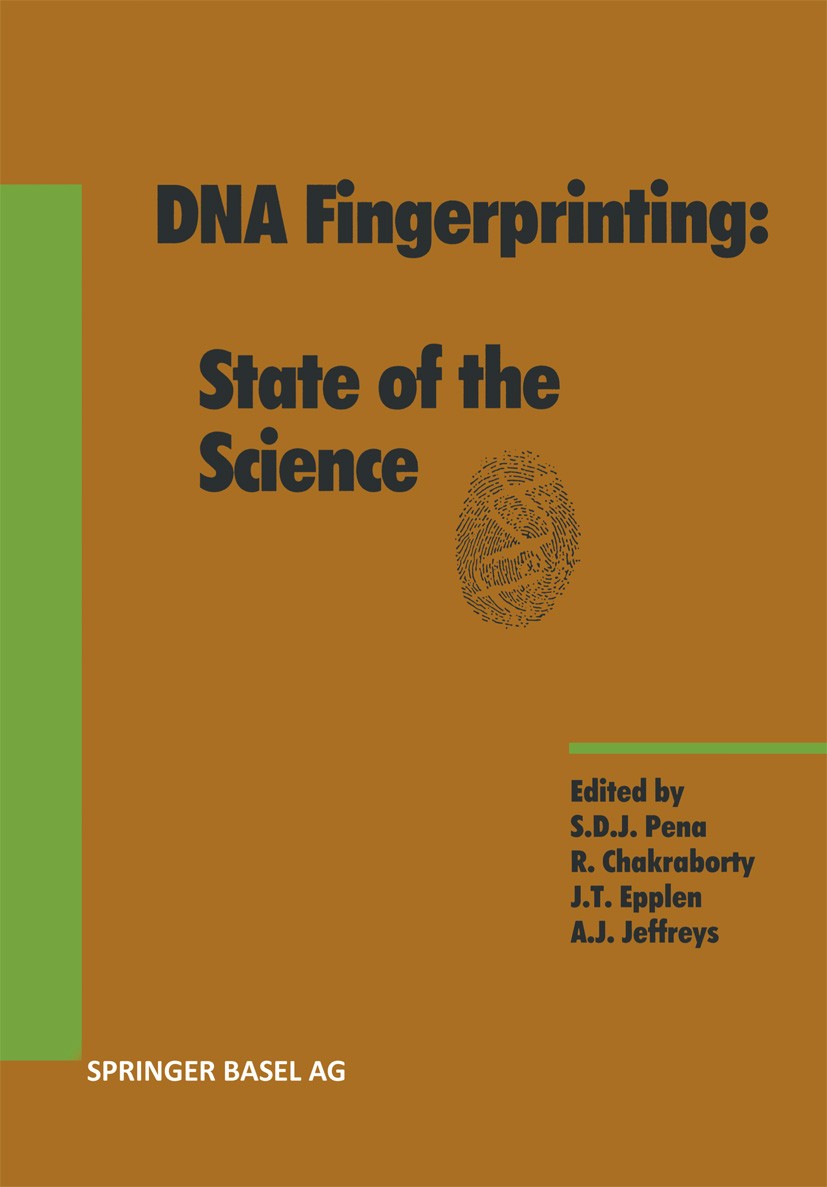| 书目名称 | DNA Fingerprinting: State of the Science |
| 编辑 | S. D. J. Pena,R. Chakraborty,Alec J. Jeffreys |
| 视频video | http://file.papertrans.cn/261/260147/260147.mp4 |
| 丛书名称 | Experientia Supplementum |
| 图书封面 |  |
| 描述 | DNA fingerprinting had a well-defined birthday. In the March 7, 1985 issue of Nature, Alec Jeffreys and coworkers described the first develop ment ofmu1tilocus probes capable of simultaneously revealing hypervari ability at many loci in the human genome and called the procedure DNA fingerprinting. It was a royal birth in the best British tradition. In a few months the emerging technique had permitted the denouement of hith erto insoluble immigration and paternity disputes and was already heralded as a major revolution in forensic sciences. In the next year (October, 1986) DNA fingerprinting made a dramatic entree in criminal investigations with the Enderby murder case, whose story eventually was turned into a best-selling book ("The Blooding" by Joseph Wambaugh). Today DNA typing systems are routinely used in public and commercial forensic laboratories in at least 25 different countries and have replaced conventional protein markers as the methods of choice for solving paternity disputes and criminal cases. Moreover, DNA fingerprinting has emerged as a new domain of intense scientific activity, with myriad applications in just about every imaginable territory of life sciences. T |
| 出版日期 | Book 1993 |
| 关键词 | databases; evolution; fungi; genetics; microorganism; nature; organization |
| 版次 | 1 |
| doi | https://doi.org/10.1007/978-3-0348-8583-6 |
| isbn_softcover | 978-3-7643-2906-8 |
| isbn_ebook | 978-3-0348-8583-6Series ISSN 1664-431X Series E-ISSN 2504-3692 |
| issn_series | 1664-431X |
| copyright | Springer Basel AG 1993 |
 |Archiver|手机版|小黑屋|
派博传思国际
( 京公网安备110108008328)
GMT+8, 2025-11-11 12:48
|Archiver|手机版|小黑屋|
派博传思国际
( 京公网安备110108008328)
GMT+8, 2025-11-11 12:48


